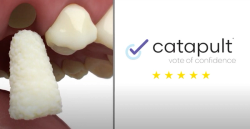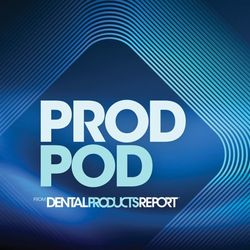- About Us
- Advertise
- Editorial
- Contact Us
- Terms and Conditions
- Privacy Policy
- Do Not Sell My Personal Information
© 2025 MJH Life Sciences™ and Dental Products Report. All rights reserved.
The ultimate guide to becoming a complete dentist
The distinguished team of dentists behind The Dawson Academy show dentists how they can add value to their patients and practice by implementing the concepts, techniques and skills presented. This column challenges dentists to recognize the clinical deficiencies that prevent them from achieving their personal and professional goals. The learning points in each piece demonstrate how to improve a clinical aspect of the practice which, in turn, will create increased efficiency, predictability and profitability.
The distinguished team of dentists behind The Dawson Academy show dentists how they can add value to their patients and practice by implementing the concepts, techniques and skills presented. This column challenges dentists to recognize the clinical deficiencies that prevent them from achieving their personal and professional goals. The learning points in each piece demonstrate how to improve a clinical aspect of the practice which, in turn, will create increased efficiency, predictability and profitability.
Related Article:
Whether we realize it or not, there are two distinct populations of patients within dental practices. In the first population, dental disease is either bacterial (caries or periodontal disease) or a structural/bio-mechanical problem within a tooth and patients are completely satisfied with the appearance of their smile. While the second population can also present with these issues, in addition, the size, shape and position of the teeth are unacceptable. Patients in this second population are difficult to manage because the joints, muscles and teeth are not in functional harmony, causing a breakdown in the masticatory system. Functional problems can present as worn or sore teeth, broken porcelain, loose teeth, headaches, esthetic dissatisfaction and problems with the temporomandibular joints. These functional problems typically cause the most difficult challenges and frustrations in daily practice.
Dental school primarily prepares dentists to treat the first population by teaching the etiologies and treatment of caries and periodontal disease. If upon graduation dentists can: manipulate and place a myriad of direct restorative materials; prepare, retract, impress and place a quadrant of crowns that fit properly and are comfortable to the patient; and can perform basic oral surgical and endodontic procedures, they have received a wonderful start to their education. Diagnosing and treating the second patient population requires a thorough understanding of the anatomy and function of the masticatory system and empowers a dentist to graduate from being a tooth dentist to being a physician of the masticatory system. No other discipline in medicine has the responsibility for this system. Practicing “complete dentistry” involves diagnosing and treating biological, structural and occlusal diseases.
Dentists with thriving general practices have one common thread-they know how to solve patients’ problems. Developing a “complete” understanding of the bacterial, functional and esthetic issues that plague patients is the key to success. Not having this knowledge leads to incomplete diagnosis and treatment plans frustrating both the patient and the dentist, costing the practice time and money and preventing the practice from reaching its full potential.
Complete vs. Incomplete
Complete dentistry begins with a complete examination, evaluating for signs as well as symptoms of disease. The hallmark of complete dentistry is a comprehensive diagnosis that identifies the cause(s) of all identified problems. This is then followed by a complete treatment plan that corrects the cause of the problems and then corrects the effects of the problems. Being able to sequence and phase treatment enables patients to receive care that restores them to optimal health as their time and resources permit.
Clinical example
The case of Ben, a 50-year-old male, is a good representation of the practice of Complete Dentistry. The patient’s chief complaint is broken porcelain on the crown on tooth No. 30, which was placed after the tooth fractured. The porcelain broke three weeks after placement, causing the patient to seek a new dentist.
A complete examination, including a pre-clinical interview, reveals the following:
- The patient has an interest in improving his smile, but expresses concerns about finances
- When shown the wear on the anterior teeth during the examination, the patient reports it has been accelerating and is a concern. His previous dentist never discussed it
- Mild, generalized gingivitis, normal probing depths of 1–3 mm
- Enamel worn into dentin on upper and lower anterior teeth
- TM joints can accept loading in CR and there is no history of joint problems
- Muscle palpation reveals slight tenderness in temporal muscles
- Anterior open bite in CR with slide into MI, initial point of contact tooth Nos. 3/30
- History of sleep apnea, prescribed CPAP, does not wear it
If a treatment plan were developed with only biologic and structural issues in mind, it would call for a cleaning and a new crown on tooth No. 30. A complete evaluation, however, reveals wear into dentin on the upper and lower anterior teeth, which by the patient’s own admission is accelerating.
Using mounted diagnostic casts in conjunction with a full series of photographs is the only way to evaluate the problems three dimensionally (Figs. 6-8) and thus to find the best, most conservative option for creating a stable, minimal stress occlusion.
A duplicate set of mounted casts will be adjusted or waxed to specifically identify the contours that need to be changed (Fig. 9). Once the changes have been achieved on the articulator, a treatment plan can be developed that corrects the cause of the wear and broken tooth and produces a predictable, stable result.



